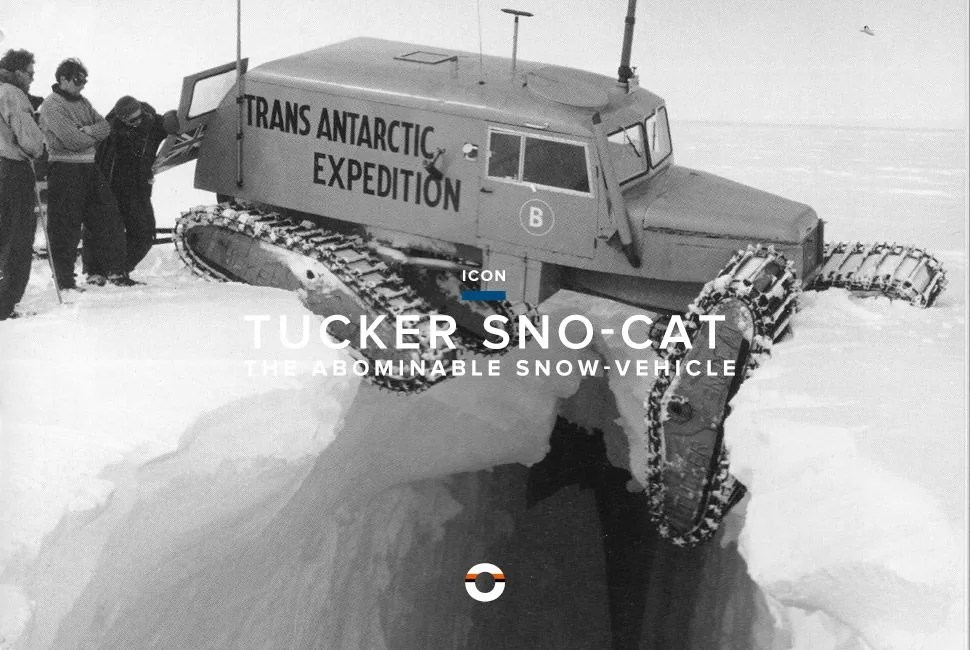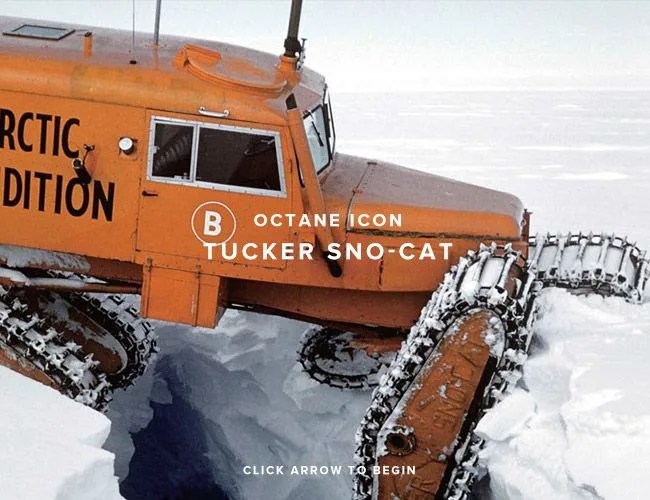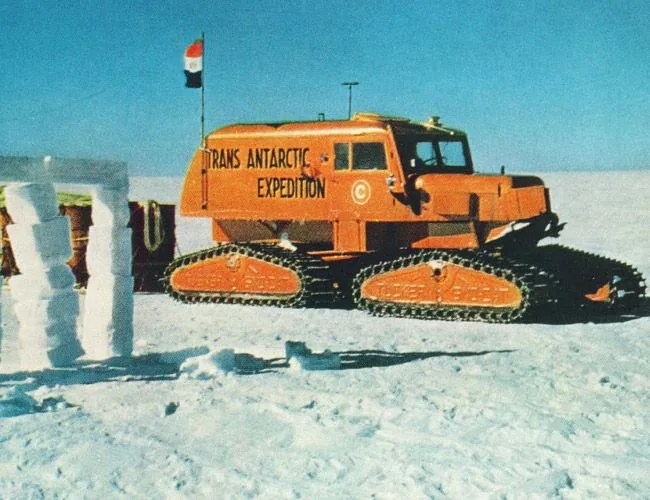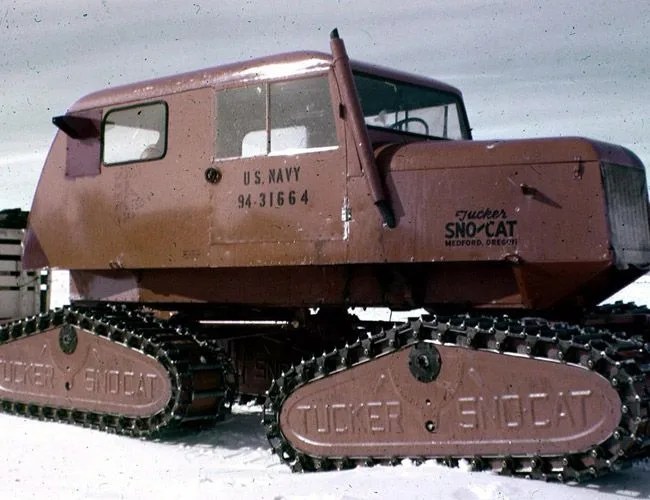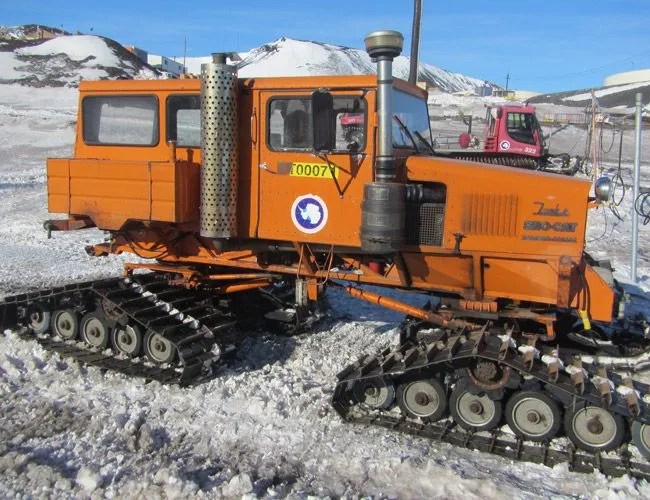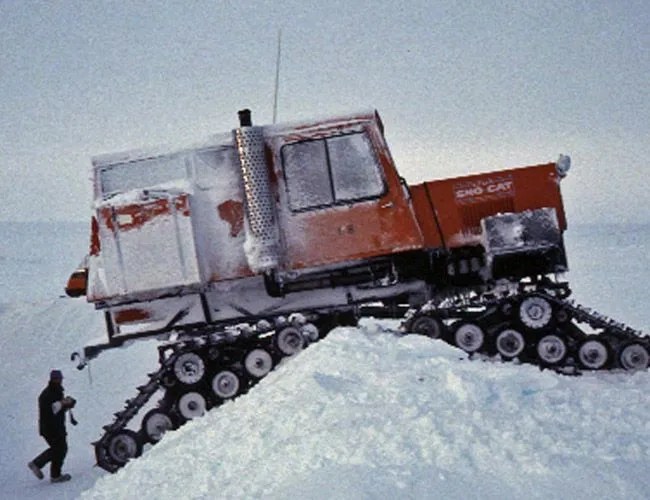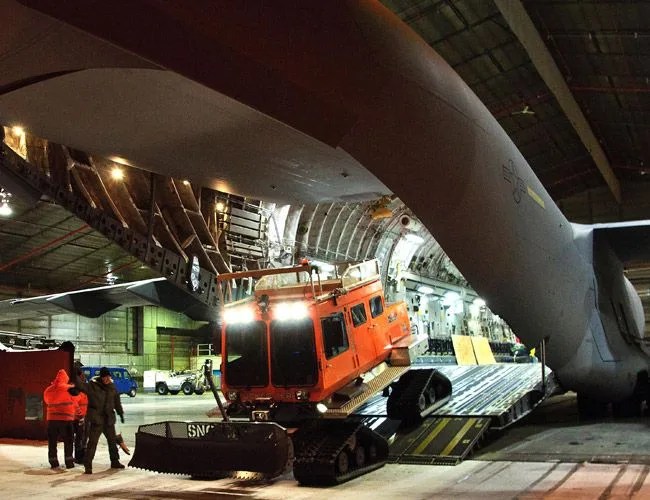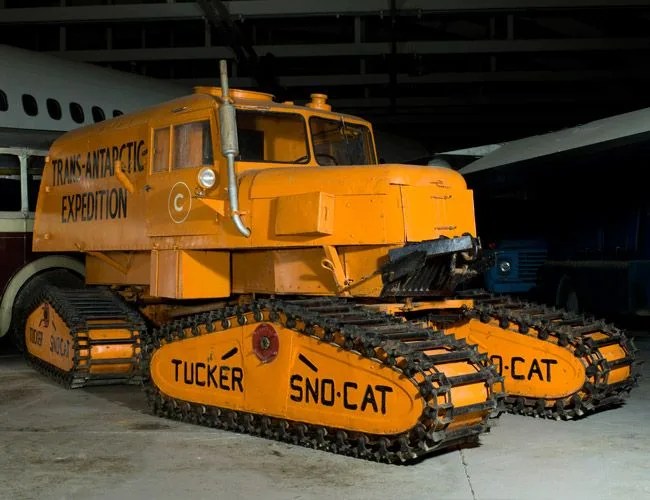Your closest encounter with the winter beast known as the Tucker Sno-Cat was probably watching as scientists and explorers with frozen beards made their way through parts unknown in an episode of National Geographic. What you probably don’t know is that these cold-capable snow monsters materialized out of one man’s desire to find a better method of snow travel, or that they comprise a proud family of multi-purpose vehicles that got their start way back in 1942.
Not just overgrown snowmobiles, Sno-Cats look like nothing else out there and are easily the winter wheels we’d imagine James Bond using to run over a herd of enemy skiers. The Tucker Sno-Cat has not only survived more than a half century of unbound snowy travel in the harshest of environs, it’s outdone much of its competition due to its ruggedness, versatility and technological evolution. This is an icon all its own in an industry that has few competitors.

What It’s All About
The Tucker Sno-Cat was birthed in the mind of E.M. Tucker, Sr. of southwest Oregon. Born in 1892, Tucker started his quest for better snow travel when he was just a boy. On his many snowy walks as a child, he began devising alternative methods to get across deep snow and started to build various screw-propelled snow vehicles, all of which proved inefficient, slow and hard to drive. Screw-propelled vehicles also lacked the ability to perform over uneven terrain, and their ability to steer was essentially absent.
As a result, Tucker rethought his methodology and sought to develop an entirely new form of winter transportation, one that would overcome all of the drawbacks of the screw-propelled machines. He wanted something reliable and easy to maintain, something that could handle miles of snow-covered terrain without difficulty. His idea was to use tank-like tracks, enabling high amounts of traction, a previously unknown degree of maneuverability in snow, excellent ground clearance, and the ability to travel on top of the snow as opposed to going through it.
Tucker built the first Sno-Cat in 1942, and in the following decades continued to develop the beasts for enhanced capability and maintenance. By altering the vehicle’s design and materials, Tucker vastly improved its cold-weather utility — the Sno-Cat became not just a tool for temperate transportation and agricultural purposes, but a hardy standby for long-range expeditions in extreme environments. What Tucker achieved was no small feat; other attempts that mimic the Sno-Cat’s design have failed to flourish. Sno-Cat has since become a general term for this segment of vehicles, but the Tucker Sno-Cat remains as the sole success story that’s spanned seventy years. In modern form, the Tucker Sno-Cat is a remarkably easy vehicle to drive, as it’s built around automotive-style controls, requiring little training for the inexperienced rider; those familiar with car operations can helm it sufficiently should an emergency require its immediate operation.
8 photos
